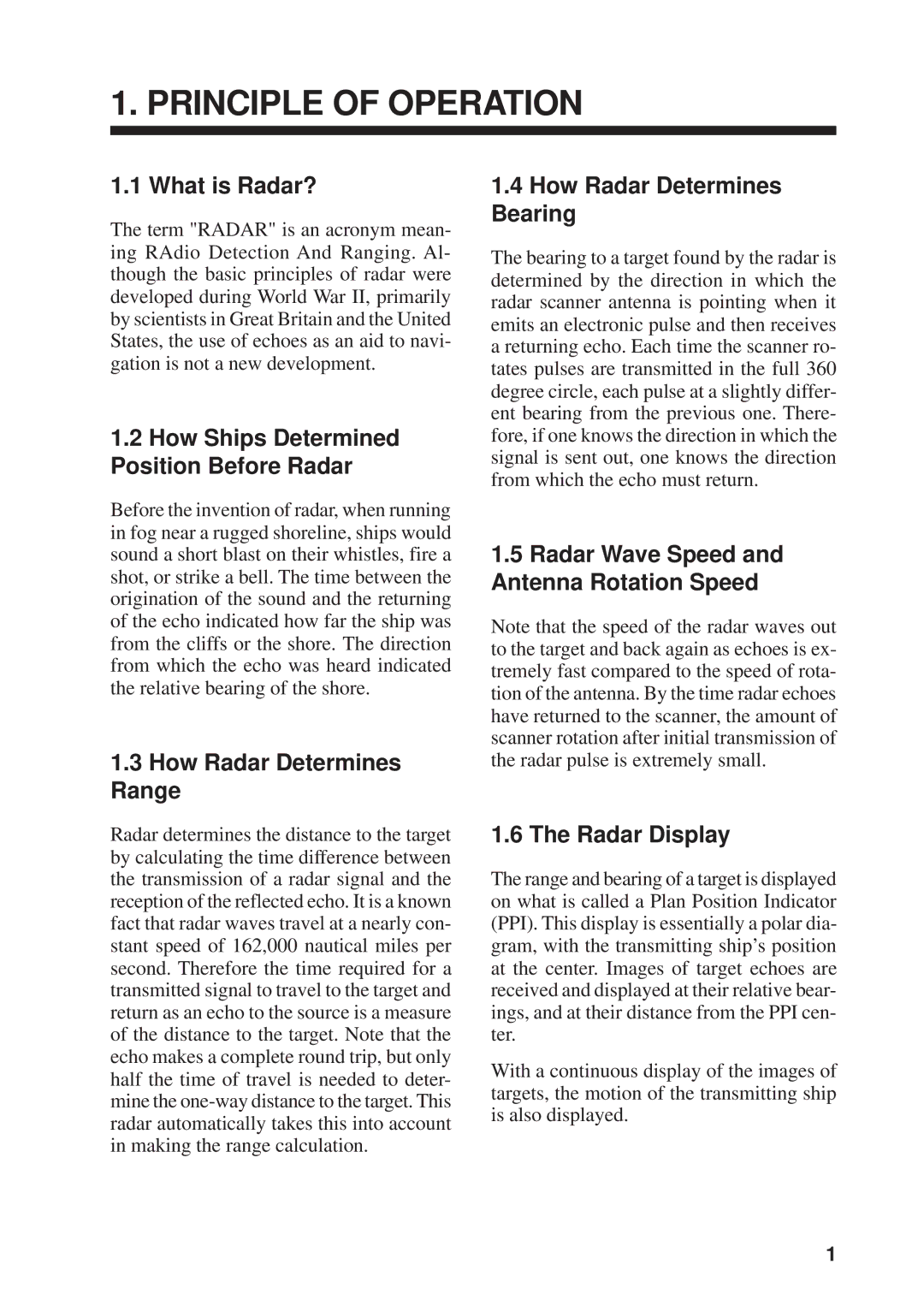1. PRINCIPLE OF OPERATION
1.1 What is Radar?
The term "RADAR" is an acronym mean- ing RAdio Detection And Ranging. Al- though the basic principles of radar were developed during World War II, primarily by scientists in Great Britain and the United States, the use of echoes as an aid to navi- gation is not a new development.
1.2How Ships Determined Position Before Radar
Before the invention of radar, when running in fog near a rugged shoreline, ships would sound a short blast on their whistles, fire a shot, or strike a bell. The time between the origination of the sound and the returning of the echo indicated how far the ship was from the cliffs or the shore. The direction from which the echo was heard indicated the relative bearing of the shore.
1.3How Radar Determines Range
Radar determines the distance to the target by calculating the time difference between the transmission of a radar signal and the reception of the reflected echo. It is a known fact that radar waves travel at a nearly con- stant speed of 162,000 nautical miles per second. Therefore the time required for a transmitted signal to travel to the target and return as an echo to the source is a measure of the distance to the target. Note that the echo makes a complete round trip, but only half the time of travel is needed to deter- mine the
1.4How Radar Determines Bearing
The bearing to a target found by the radar is determined by the direction in which the radar scanner antenna is pointing when it emits an electronic pulse and then receives a returning echo. Each time the scanner ro- tates pulses are transmitted in the full 360 degree circle, each pulse at a slightly differ- ent bearing from the previous one. There- fore, if one knows the direction in which the signal is sent out, one knows the direction from which the echo must return.
1.5Radar Wave Speed and Antenna Rotation Speed
Note that the speed of the radar waves out to the target and back again as echoes is ex- tremely fast compared to the speed of rota- tion of the antenna. By the time radar echoes have returned to the scanner, the amount of scanner rotation after initial transmission of the radar pulse is extremely small.
1.6 The Radar Display
The range and bearing of a target is displayed on what is called a Plan Position Indicator (PPI). This display is essentially a polar dia- gram, with the transmitting ship’s position at the center. Images of target echoes are received and displayed at their relative bear- ings, and at their distance from the PPI cen- ter.
With a continuous display of the images of targets, the motion of the transmitting ship is also displayed.
1
